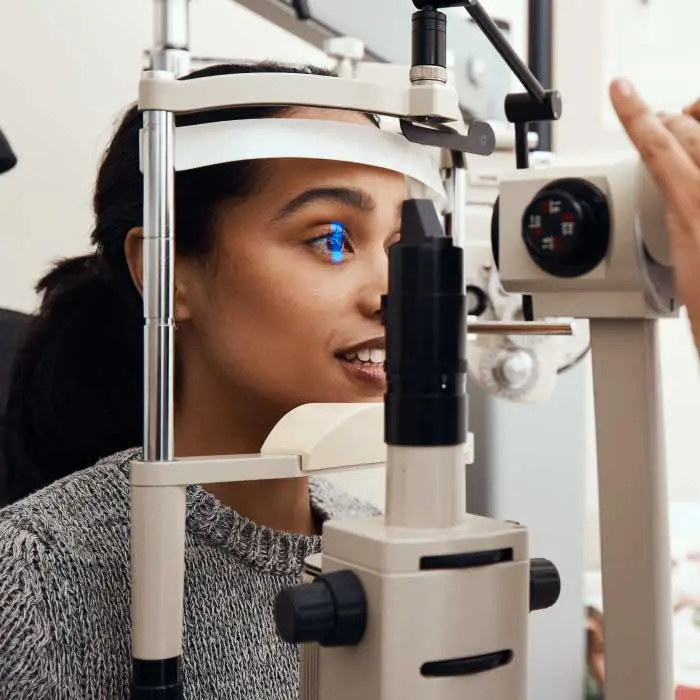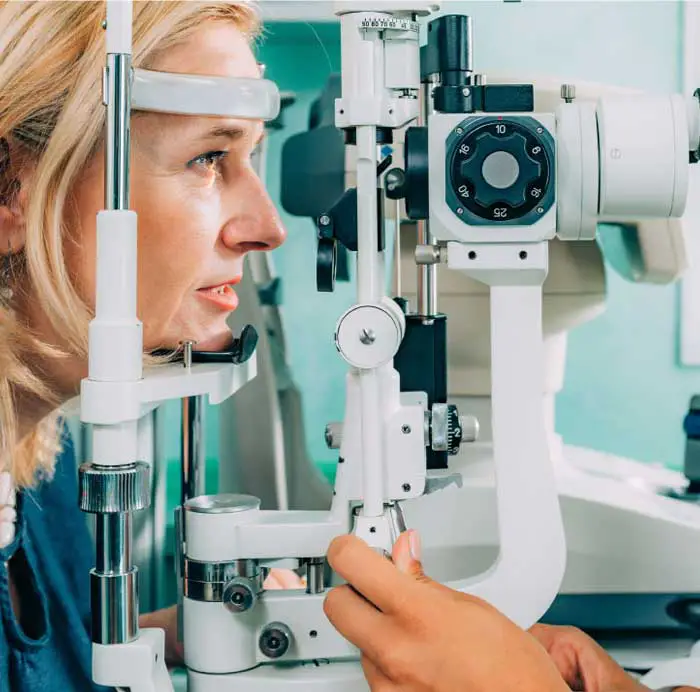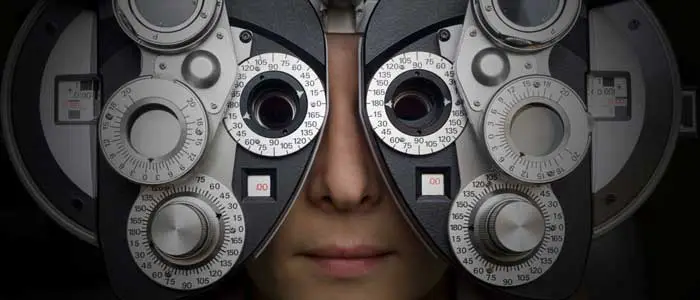Sjögren's Syndrome - Symptoms, Causes and Treatment
07-04-2024
What is Sjögren's Syndrome?
Sjögren's Syndrome is a chronic autoimmune disease that primarily affects the glands that produce tears and saliva. This condition can lead to dryness in the eyes and mouth, causing discomfort and potentially leading to complications such as corneal damage and dental issues. In addition to these symptoms, Sjögren's Syndrome can also affect other parts of the body, such as the joints and skin. Proper management and care are essential for individuals with this condition to maintain their eye health and overall well-being.What Are The Causes Of Sjögren's Syndrome?
Sjögren's Syndrome is an autoimmune disorder, meaning that it occurs when the body's immune system mistakenly attacks its own cells and tissues. In the case of Sjögren's Syndrome, the immune system targets the glands that produce tears and saliva, leading to the characteristic dryness of the eyes and mouth that is commonly associated with the condition. The exact cause of this autoimmune response is not fully understood, but it is believed to be a combination of genetic predisposition and environmental triggers. This complex interplay between genetic and environmental factors ultimately leads to the development of Sjögren's Syndrome.What Are The Risk Factors For Sjögren's Syndrome?
For an optometrist, it is important to be aware of the risk factors associated with Sjögren's Syndrome. These risk factors include being female, as the condition predominantly affects women, particularly those over the age of 40. Additionally, individuals with a family history of autoimmune diseases such as rheumatoid arthritis or lupus may have an increased risk of developing Sjögren's Syndrome. Certain medications, such as antihistamines and blood pressure medications, have also been linked to an increased risk of developing the condition. It is important to be vigilant in monitoring patients with these risk factors for signs and symptoms of Sjögren's Syndrome in order to provide appropriate care and management.What Are The Symptoms Of Sjögren's Syndrome?
Symptoms of Sjögren's Syndrome can vary from person to person, but common symptoms include dry eyes, dry mouth, fatigue, joint pain, and dry skin. Patients may also experience difficulty swallowing, swollen salivary glands, and dental issues such as cavities or gum disease. Some individuals with Sjögren's Syndrome may also have dryness in other parts of the body, such as the nose, throat, or vagina. Additionally, some patients may develop complications such as lung or kidney problems. If you are experiencing any of these symptoms, it is important to see an optometrist or other healthcare provider for a proper evaluation and diagnosis.How is Sjögren's Syndrome Diagnosed?
Sjögren's Syndrome is typically diagnosed through a combination of medical history, physical examination, and various tests. During the medical history portion, patients may be asked about their symptoms, such as dry eyes and mouth, as well as any other associated conditions they may have. The physical examination may involve assessing the eyes and mouth for signs of dryness or inflammation. Additionally, specific tests such as blood tests, eye tests, and salivary gland tests may be conducted to confirm the diagnosis. Blood tests can detect certain antibodies associated with Sjögren's Syndrome, while eye tests can measure tear production and salivary gland tests can evaluate saliva flow. Overall, a comprehensive evaluation is necessary to accurately diagnose Sjögren's Syndrome.How is Sjögren's Syndrome Treated?
Sjögren's Syndrome is typically managed through a combination of treatments aimed at relieving symptoms and preventing complications. Treatment options for Sjögren's Syndrome may include the use of artificial tears, lubricating eye drops, and prescription medications to reduce inflammation and promote tear production. In severe cases, punctal occlusion procedures may be recommended to help retain tears in the eyes. Additionally, patients may benefit from using humidifiers, avoiding environmental triggers, and practicing good oral hygiene to manage dry mouth symptoms. Overall, the goal of treatment for Sjögren's Syndrome is to improve the quality of life for patients by addressing their specific symptoms and preventing further complications related to the condition.Is There A Cure For Sjögren's Syndrome?
As an optometrist, I can tell you that unfortunately, there is currently no cure for Sjögren's Syndrome. However, there are treatments available to help manage the symptoms and improve the quality of life for patients with this condition. These treatments may include artificial tears, prescription eye drops, medications to increase saliva production, and other interventions to alleviate dryness and discomfort. It is important for individuals with Sjögren's Syndrome to work closely with their healthcare team to develop a personalized treatment plan that addresses their specific needs and concerns.How Can Sjögren's Syndrome Be Prevented?
Unfortunately, there is currently no known way to prevent Sjögren's Syndrome. However, maintaining good overall health and staying hydrated can help manage symptoms and reduce discomfort associated with the condition. It is important for individuals with Sjögren's Syndrome to work closely with their healthcare team, including an optometrist, to develop a comprehensive treatment plan that addresses their specific needs and concerns. Regular eye exams and monitoring of symptoms can help detect any changes in vision or eye health early on, allowing for prompt intervention and management.Regular eye exams with advanced technologies are essential for the early diagnosis and treatment of Sjögren's Syndrome. Schedule an eye exam with an optometrist today!
Schedule An Appointment
Adult Eye Exams
Our advanced eye exams consist of 25+ modern tests and digital scans to assess eye health, function, and visual acuity.

Child Eye Exams
Give your child a clear future with an annual eye exam from our experienced Edmonton optometrists.

Senior Eye Exams
Maintain your vision through your golden years with gold standard eye care from the optometrists at our Edmonton eye clinic.

Contact Lens Eye Exams
Our eye exams for contact lens wearers include test and digital scans to assess eye health, function, visual acuity, and lens fit.

Diabetic Eye Exams
Managing diabetes requires regular eye exams to ensure that diabetes is not causing irreversible vision loss.

Dilated Eye Exams
Dilating the eyes enables our Edmonton optometrists to see more of the eye so that you many never see less.
Our Edmonton Eye Exams Are Comprised Of 4 Phases Of Evaluation

1. Eye Exam Pre-Testing
Corneal Thickness | Intraocular Pressures | Visual Field
Pre-testing is a detailed process that gathers all necessary information for the optometrist in advance of the optometrist-administered eye examination. This process involves completing a detailed patient history, as well as a series of standard tests. Pre-testing is an essential part of the comprehensive eye exam process, providing valuable information and visuals for both the optometrist and the patient.
More About Pre-Testing »
2. Advanced Diagnostic Testing
Retinal Photography, OCT, Topography
eye-deology Vision Care differentiates itself from other clinics by having the most advanced modern diagnostic specialty testing equipment. Specialty equipment, such as a wide-angle high-resolution retinal imager, Optical Coherence Tomography (OCT), Humphrey Visual Field Analyzer and corneal topographer, ensures that patients receive the best comprehensive eye care.
More About Advanced Testing »
3. Optometrist Examination
Health Assessment & Disease Diagnosis
eye-deology Vision Care Edmonton optometrists perform a multitude of tests and assessments to evaluate ocular health, eye coordination, and visual acuity. In addition, they also evaluate the results of the tests and scans performed during pre-testing. As part of patient education, our optometrists also take the time to show and explain results to patients.
More About Doctor Exam »
4. Eye Glass Consult
Prescription | Lens Selection | Digital Fitting
If you require corrective lenses to improve your vision, our licensed opticians will customize their fit to your unique attributes, needs, lifestyle, and budget. Our opticians are happy to provide you with information about the latest eyeglass frame and lens technologies available so you can make informed decisions and begin seeing and looking your best.
More About Eyewear Consult »